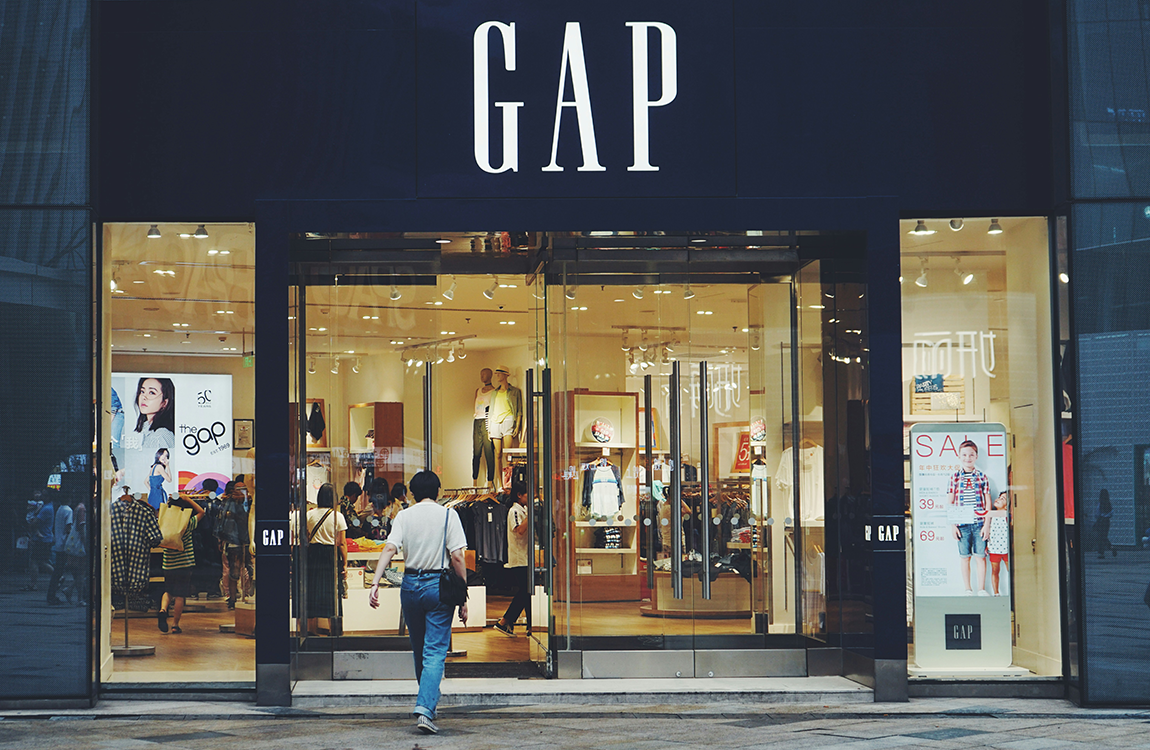If It Ain't Broke, Don't Fix It
In the business world, changing a brand logo is a significant decision. A successful brand logo is not just an image or a combination of letters; it represents a brand's values, personality, and identity. However, sometimes brand executives take the risk of altering the brand logo, attempting to inject new vitality or adapt to changing market trends. Nonetheless, this kind of change is not always successful and can even result in losses for the brand.
Let's take the example of GAP to illustrate this issue. GAP is a globally renowned fashion brand known for its classic blue background with white letters logo. However, in 2010, GAP decided to change their brand logo and introduced a new design. This new design was deemed modern and stylish but was met with severe criticism from consumers. Many felt that the new logo had abandoned GAP's traditional and recognizable elements, leading to confusion about the brand's values.
Consumers reacted strongly to this change, expressing their dissatisfaction with the new logo on social media and starting to boycott GAP's products. This led to a significant decline in GAP's sales and a loss of market share in a short period. Under the pressure, GAP had to abandon the new logo within a week and revert to their traditional blue background with white letters logo. This failed attempt at logo change taught GAP a valuable lesson - if the brand logo isn't truly problematic, there's no need to attempt to change it.
So, when is the right time to change a brand logo? In reality, this is a highly complex question with no fixed answer. The timing of a brand logo change depends on multiple factors, including the brand's goals, target audience, market trends, and competitive environment.
Firstly, the timing for a brand logo change might be when the brand is undergoing significant changes or transformations. For example, when a brand transitions from a traditional industry to the digital realm, it might consider changing its logo to reflect this transformation. Such a change can help the brand establish new recognition and reputation in the new market.
Secondly, the timing for a brand logo change might be when the brand needs to reposition or reshape its image. If a brand is facing declining market share, increased competitive pressure, or negative changes in consumer perception of its products or values, redesigning the brand logo might be an effective strategy. Through a logo change, the brand can convey a fresh image, rekindling consumer interest and loyalty.
Additionally, the timing for a brand logo change might also be when market trends shift. The fashion and design industry, for instance, are often influenced by trends and styles, and brands may need to follow these changes to stay up to date. In such cases, a logo change can help the brand align with new market trends and attract a younger generation of consumers.
However, regardless of when a brand considers a logo change, brand executives should proceed with caution and assess the risks. They should understand the significance of the brand logo to the brand and ensure that any changes maintain the brand's recognition and values. Additionally, through market research and consumer surveys, brand executives can gain better insights into consumer sentiments and expectations regarding the brand logo, enabling them to make informed decisions.
In conclusion, changing a brand logo is a significant decision that requires careful consideration. The losses suffered by GAP after their logo change serve as a valuable example, reminding us that if the brand logo isn't truly problematic, there's no need to attempt to change it. The timing for a brand logo change might include situations where the brand is undergoing changes, repositioning, or market trends shift. However, regardless of the timing, careful evaluation of risks should be conducted to ensure that a logo change maintains the brand's recognition and values.
References:
- Aaker, D. A. (2010). Building strong brands. Simon and Schuster.
- Keller, K. L. (1993). Conceptualizing, measuring, and managing customer-based brand equity. Journal of marketing, 57(1), 1-22.
- Kotler, P., & Keller, K. L. (2016). Marketing management. Pearson.
如果沒有壞掉,就不要試圖修理它
在商業世界中,品牌標誌的改變是一個相當重大的決策。一個成功的品牌標誌不僅僅是一個圖像或一個字母組合,它代表著一個品牌的價值觀、個性和識別度。然而,有時候,品牌主管會冒險改變品牌標誌,嘗試為品牌注入新的活力或適應變化的市場趨勢。然而,這種改變並不總是成功的,有時候甚至會導致品牌的損失。
讓我們以GAP作為一個例子來講解這個問題。GAP是一個世界知名的時尚品牌,以其經典的藍底白字標誌聞名。然而,在2010年,GAP決定改變他們的品牌標誌,引入了一個新的設計。這個新的設計被認為是現代和時尚的,但是卻遭到了消費者的嚴厲批評。很多人認為這個新的標誌失去了GAP一直以來的傳統和辨識度,並且對於品牌的價值觀造成了混淆。
消費者對這個改變的反應非常強烈,他們在社交媒體上表達了對這個新標誌的不滿,並開始拒絕購買GAP的產品。這導致了GAP在短時間內的銷售額下降,損失了大量的市場份額。面對這種壓力,GAP不得不在一周內放棄了這個新的標誌,並恢復了他們傳統的藍底白字標誌。這次品牌標誌更換的失敗教訓使GAP認識到,如果品牌標誌沒有真正的問題,就不應該輕易嘗試改變它。
那麼,什麼時候是品牌標誌更換的時機點呢?實際上,這是一個非常複雜的問題,沒有一個固定的答案。品牌標誌更換的時機點取決於多個因素,包括品牌的目標、目標受眾、市場趨勢和競爭環境等。
首先,品牌標誌更換的時機點可能是在品牌面臨重大變化或轉型時。例如,當一個品牌從傳統行業轉向數字化行業時,它可能會考慮改變品牌標誌,以反映這種變革。這種改變可以幫助品牌在新市場中建立新的識別度和聲譽。
其次,品牌標誌更換的時機點可能是在品牌需要重新定位或重新塑造形象時。如果一個品牌面臨市場份額下降、競爭壓力增加或消費者對其產品或價值觀的認知出現負面變化,那麼重新設計品牌標誌可能是一種有效的策略。透過更換標誌,品牌可以傳達一個全新的形象,重新吸引消費者的關注和忠誠度。
此外,品牌標誌更換的時機點也可能是在市場趨勢發生變化時。時尚和設計領域經常受到潮流和風格的影響,品牌可能需要跟隨這些變化來保持與時俱進。在這種情況下,品牌標誌的更換可以幫助品牌與新的市場趨勢保持一致,吸引更多年輕世代的消費者。
然而,無論何時考慮更換品牌標誌,品牌主管都應該謹慎行事,並評估風險。他們應該了解品牌標誌對於品牌的重要性,並確保任何更改都能夠保持品牌的識別度和價值觀。此外,透過市場研究和消費者調查,品牌主管可以更好地了解消費者對於品牌標誌的感受和期望,從而做出明智的決策。
總之,品牌標誌的更換是一個重大的決策,應該謹慎思考。GAP更換標誌後所遭受的損失是一個很好的例子,提醒著我們如果品牌標誌沒有真正的問題,就不應該輕易嘗試改變它。品牌標誌更換的時機點可能包括品牌面臨變化、重新定位或市場趨勢變化等因素。然而,無論何時考慮更換品牌標誌,都應該謹慎評估風險,確保更換能夠保持品牌的識別度和價值觀。
參考文獻:
- Aaker, D. A. (2010). Building strong brands. Simon and Schuster.
- Keller, K. L. (1993). Conceptualizing, measuring, and managing customer-based brand equity. Journal of marketing, 57(1), 1-22.
- Kotler, P., & Keller, K. L. (2016). Marketing management. Pearson.
